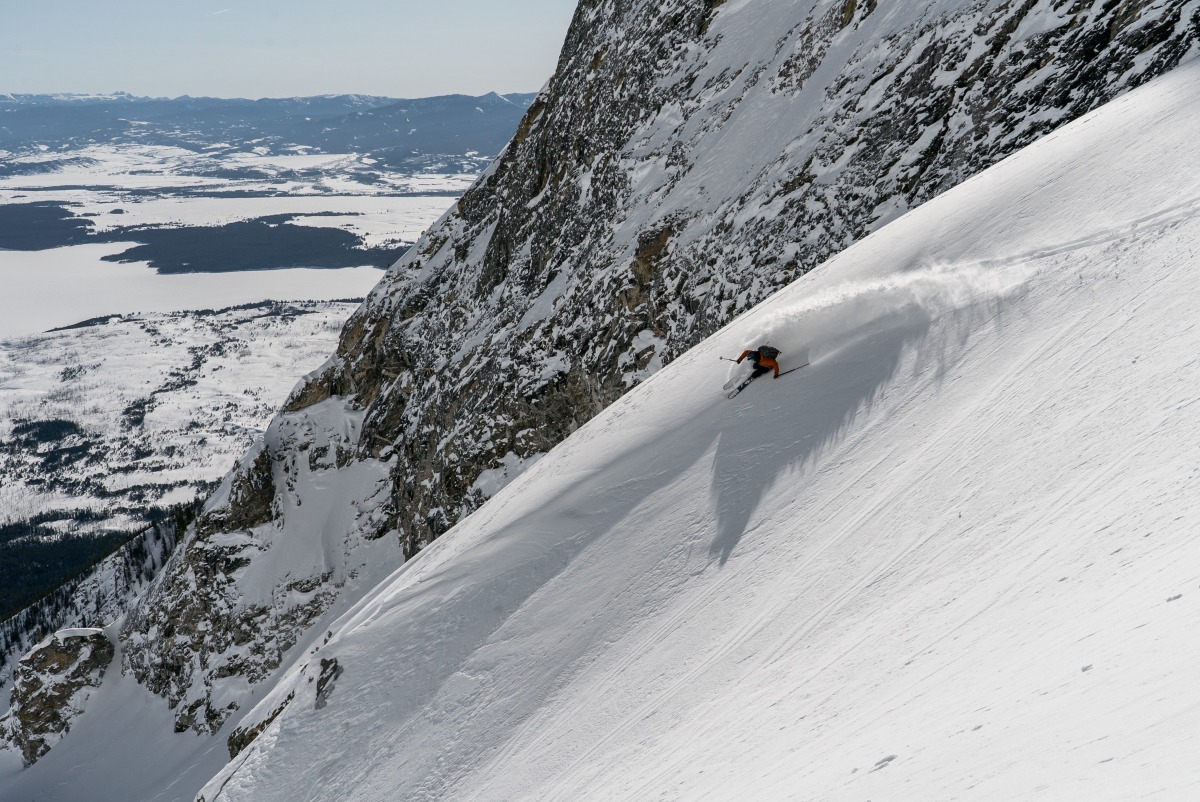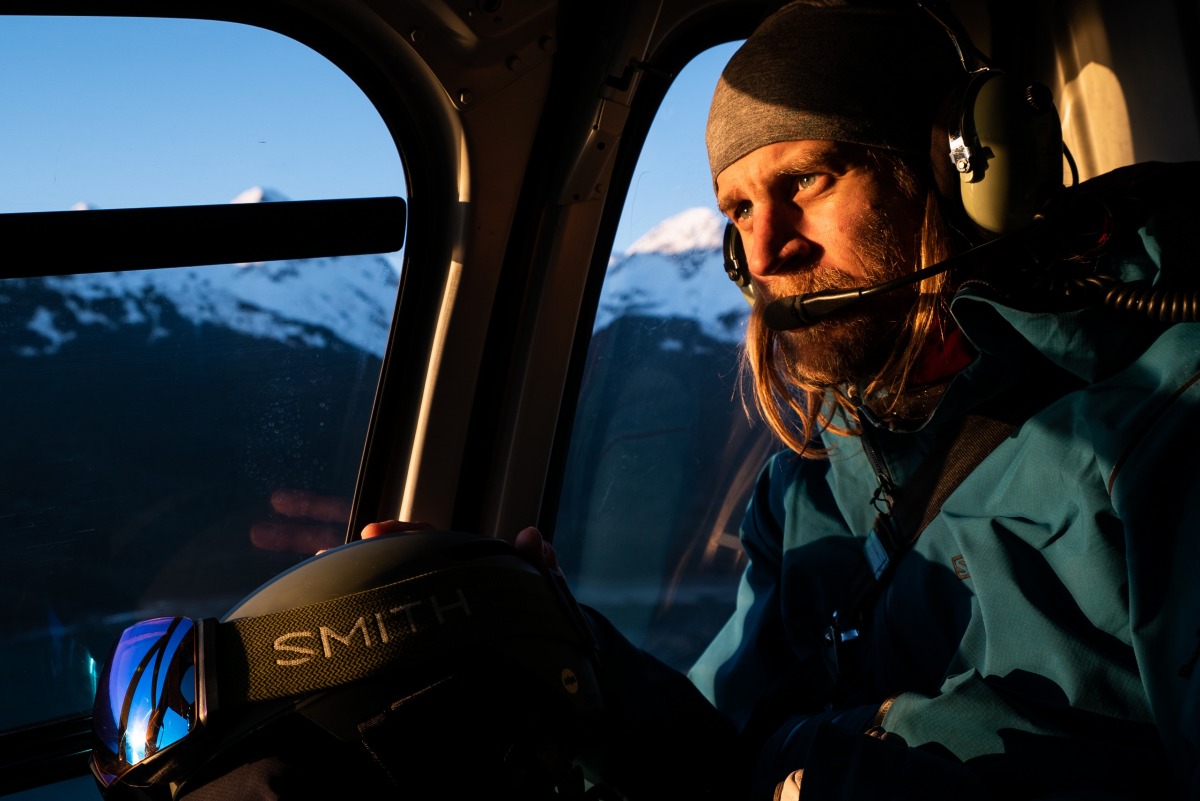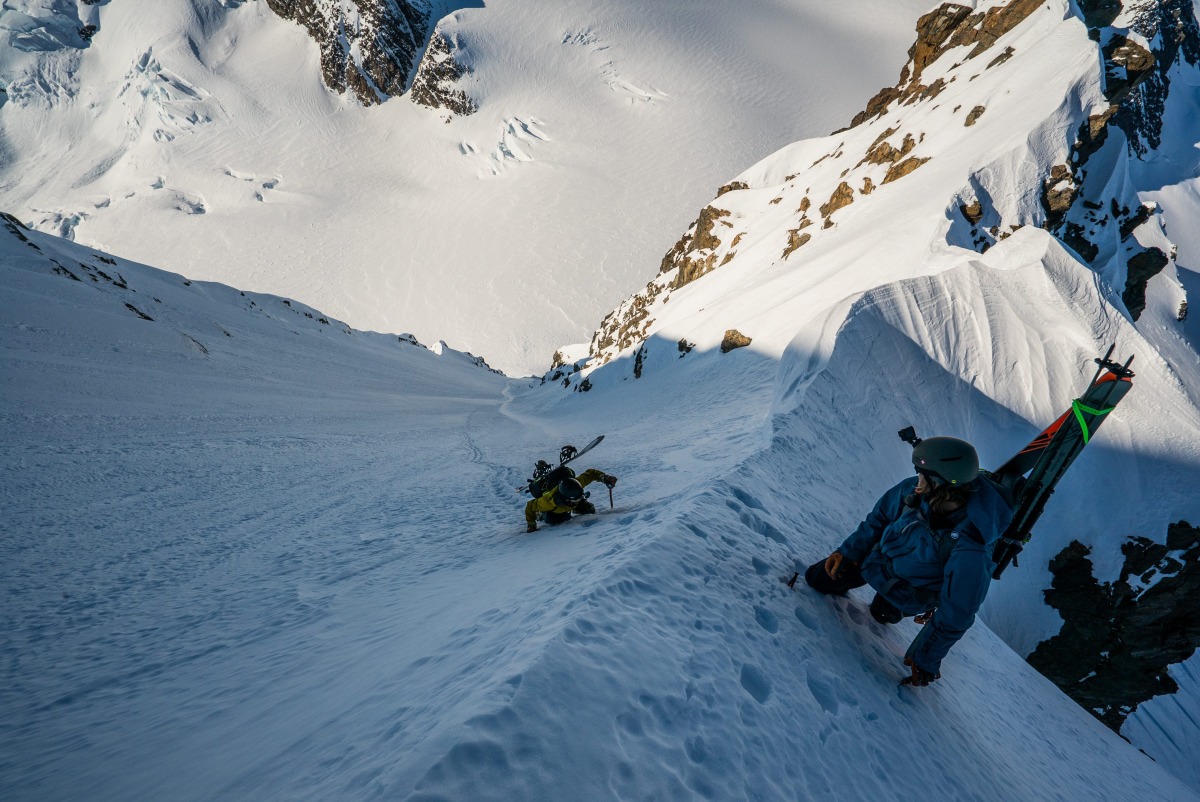
Cody nailing prime conditions on the Skillet, Mt. Moran, Wyoming. Photo: @Bjarnesalen
On mellow Coronavirus skiing and 50 Classics planning
Cody Townsend is a passionate skier at heart. Through talent and hard work he has made it his profession for 15 years. Townsend’s progression in freeride filming had become either non-fulfilling or incredibly dangerous. Since shifting his career towards ski mountaineering, he is as passionate as ever, even feeling like a beginner in some respects. I called up Cody to chat about this season, life in the time of the new coronavirus, and the future of “The Fifty Project”.
GS: Do you have a favorite ski day this winter?
CT: Probably on Mt. Moran, the last one that I skied before the shut down. There are magical moments you don’t often get when you’re climbing for your own lines, but when you can ski a 6,000 vert face fall line top to bottom and it’s in perfect pow, you really cherish them.
GS: What ski did you carry that day?
CT: My Salomon QST 118s, 192 length. I’m always kind of a big ski guy, and still not quite converted to the lightweight stuff. I’m also a 190-pound guy, so lightweight stuff and me don’t get along too well.
GS: How many days, this winter or the past two seasons, would you say you were just out free skiing, and then how many days are you filming?
CT: For the 50 project, it’s all pretty much filming. There’s very few free ski days in between. That’s the dirty secret of being a pro skier, you don’t actually get to ski that much.
GS: Let’s play alternate reality here. You’re a professional ski mountaineer first and you had the downhill talent to star in freeride movies, would/could you have made that switch?
CT: Yes, I think so. I think that’s the beauty of skiing, and you can see that with someone like Sam Anthamatten, who was a world class ice climber, alpinist, mountaineer, and ski mountaineer before he was a freeride skier. It speaks to why I love skiing so much– there are so many things to learn and you can find new ways to enjoy the sport until you’re 70 or 80 years old. I’m just starting in the ski mountaineering realm, and I feel like a beginner again. I’m learning about the mountains in a whole new way. At 37 years old, most professional athlete’s careers are in decline. I’m like, “Wow, I can continue to learn and continue to push myself in a whole new way,” – it’s the beauty of skiing.
On skiing during Coronavirus
GS: What is the social climate and virus precautions there in Tahoe? I assume you’re able get out and move around some?
CT: It’s such a wide-ranging debate right now as to where the line is and what you can do specifically outside, especially for skiers. All points have validity. Whether it’s sit inside and do absolutely nothing or get outside and do some mellow ski tours and keep yourself safe. People are ski touring around here. The great thing about Tahoe is we have a very stable snow pack, and most of our ski touring is tree lines. But, I can also see why people would say that even that is too much. So, it’s… hey, I don’t know the answer to it, I’ll tell you that.
GS: How are you approaching your tours?
CT: I’m trying to keep some sort of fitness but in a quiet and mellow low-angle way and not very often. I could be out there every day, but am not, mainly just sticking to home, working out at home, and trying to keep things moving.
GS: We’ve got this new verb in the world ski world now — “ski-shaming”. Any take on that?
CT: Ski-shaming, ya. Again, I think it has validity, but I also think it has to have individual judgement attached to it. We were still ski touring pretty actively around the time everything started closing down, including the ski resort, but didn’t have the shelter in place regulations. I saw people out there that – there was one guy who came up to the top, pulled his beacon out of his pack and turned it on at the top, and I was like, “Dude, what are you doing?” I’ve seen boot packs in the entire skiing track the whole way up. This is just a sign that there are people out there that have no backcountry experience, and then that’s where you’re like, “You should not be trying to learn this right now.” But, since then, I think it’s pretty mellowed out. Like, you’re not seeing tons of cars and trailheads and whatnot.
GS: Do you think you or fellow highly public professional skiers are in, or should take, a role model position?
CT: I don’t think I have a role model position, but I think other people think I do. So, I have to respect that in a certain way. From my position, I always feel like I’m just a skier, that’s what I do and what I love, and somehow it’s gotten me here — it’s kind of weird to me. But I think everyone that has that sort of influence is trying to influence in a correct way. It’s a tough place to be. I’m not telling everyone, “You need to stay home. Don’t go outdoors.” Because it’s not my prerogative. Individually, we all have to make those decisions for yourself and in the best interest of your community.

Townsend scouting lines last season in Alaska. Photo: Bjarne Salen @bjarnesalen
On the future of the 50 Classics
GS: Let’s jump into the book now, the 50 Classic Ski Descents of North America, specifically the cover shot. I think I’d trade a pinkie to get University Peak in good shape. Tell me about it.
CT: That’s actually the line that attracted me the most, because of naïveté. You look at an 8,000 foot ramp and the skier in you goes, “I want to ski that. That looks like one of the best ramps in the world.” As I got deeper into it and started to realize what it was, now it kind of keeps me up at night, it scares me. I would say that’s the main crux line for myself. At times I’ll be laying in bed and all of a sudden, boom, I’m up for two hours just thinking about it. Thinking about every single potential hazard, my plans for that. I’ve haven’t stepped foot on it, but I feel like I know that mountain very, very well just by dreaming and looking at every photo I can. I have talked to pretty much everyone that’s attempted it, and or skied it successfully. I hired a pilot to fly out there and take photos of it last year. I’ve done as much research as one can do on University Peak.
GS: I watched the McGowan Peak episode, where you discuss the preparation for the Classic lines in detail. What extra prep are you doing for University, or some of those harder to get and more demanding lines?
CT: My habits or plans have changed as I started to get into this. University was actually in perfect condition last year and I cancelled our attempt on it because I realized that you need to be well rested and very specifically trained to boot pack 8,000 vertical feet through the entire night. Going there in the middle of skiing a bunch of lines doesn’t actually set you up that well for that. For the most part, the tactic I’m taking on these crux lines now is trying to finish off as much of the other ones, and that way I can spend a little bit more time in the preparation for the big ones. I can’t be going from the Grand to Pyramid, to North Maroon, to Holy Cross, and then the next day fly to an expedition for two weeks up to University.
GS: I hadn’t thought about that, but you will flip the training program and approach for a specific few?
CT: Yes, ski touring shape is not the same as boot packing shape. When I start to get fit for ski touring, I’m like, “Yes, I can crank.” Then you start boot packing and you’re 500 feet up, and you’re like, “God, I’m exhausted.” It’s just a whole different muscle set, a whole different kind of breathing pattern and pacing. For University, I know I want to be cranking 6,000 vert of boot packing in a day to prepare. I realize that the big ones don’t necessarily align with the other goals of the project which is why I want to tick off the rest of them as quickly as possible.

Townsend and partner Ming Poon boot-packing last season on Pontoon Peak, Alaska. Photo: @bjarnesalen
GS: There’s a chance that the world starts to go back to normal here before the Alaska season is up. Are you still keeping eyes on anything up there?
CT: Yes and no. The University window is right now, so that’s out the door. I was putting together plans for a Mount Saint Elias trip, but have been in communication with the offices there and I don’t think it’s going to happen. I would say there’s a five percent chance, because our window is May into June, and Search and Rescue would have to come back into the workplace again. So, although the Alaska season is still sort of there, I would say there’s a very, very slim margin of it happening.
GS: Well, a lot of people are looking forward to next season at this point, so they should understand where you’re coming from.
CT: It definitely sucks to have the prime time ski mountaineering season cut off. There’s a line up in BC that’s only been skied once that hasn’t been filled in for 5 years, the Comstock Couloir, and guess what, it’s filled in this year. Guess what? I can’t go there.
Subscribe to the Fifty Project webisodes and stay tuned for Cody Townsend Quarantine Q&A Part II — GEAR.
On March 22nd 2021, Gary Smith tragically died in an avalanche outside of Beaver Creek Resort in Colorado. Since 2018, Gary has been a frequent and insightful contributor to WildSnow. From Christmas Eve spent at the Wildsnow Field HQ cabin, to testing gear and sharing his love for steep skiing around the world, he was a pillar of the ski touring community and will be greatly missed.
